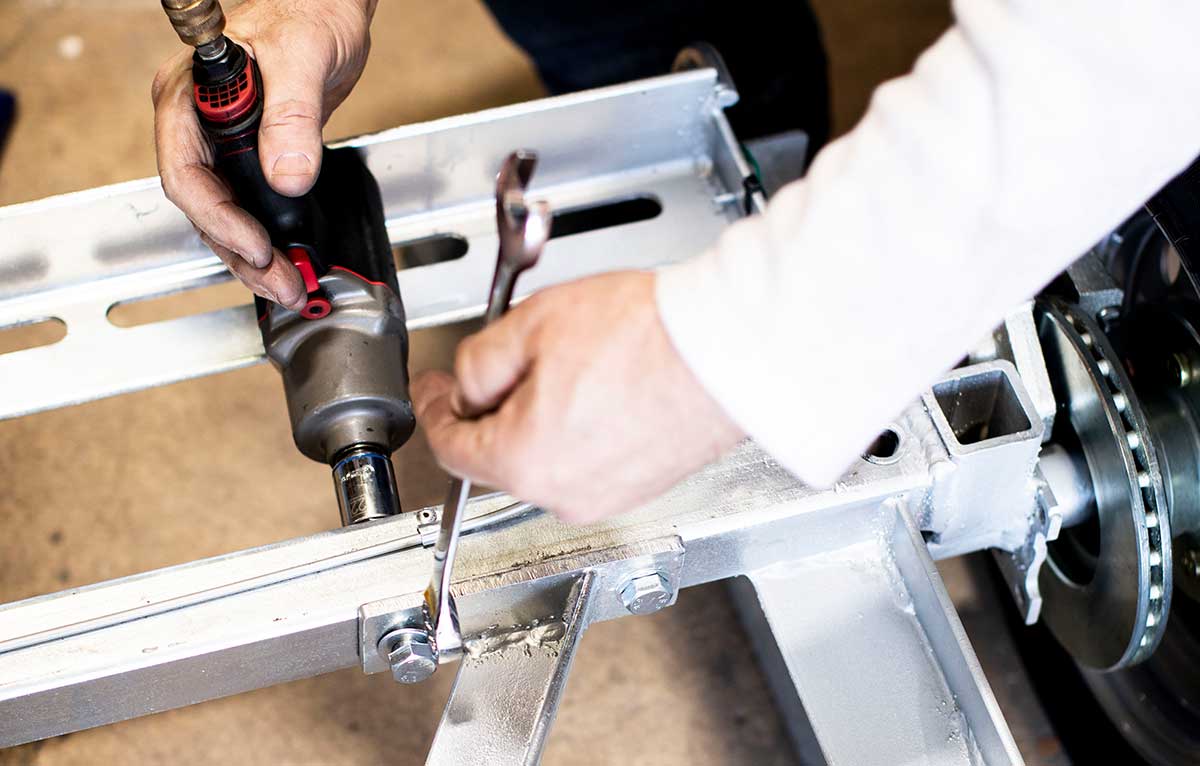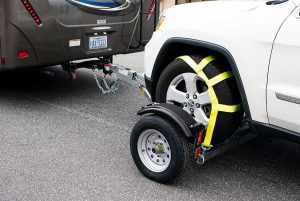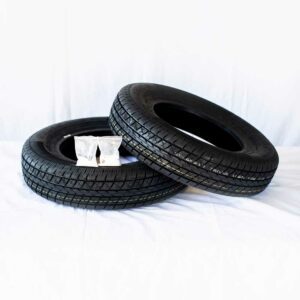
What to Look for When Buying A Tow Dolly for Sale
[vc_row][vc_column][vc_column_text]Tow dollies are the simplest, most convenient solution for transporting a second vehicle while on an RV trip. They provide you with an easy way to keep your vehicle from accumulating mileage, and guarantee you’ve got a backup vehicle to zip around whatever town or city you’re visiting.
If you want to make sure you’re finding the right tow dolly for sale, here are our top tips to help you shop smart.[/vc_column_text][/vc_column][/vc_row][vc_row][vc_column][vc_empty_space][vc_separator color=”black”][vc_empty_space][/vc_column][/vc_row][vc_row][vc_column][vc_column_text]
Pivot Location Matters
A mounted front-wheel dolly is built to act as the front wheels of the vehicle, and it twists as your RV goes into a turn. Its design minimizes the risk of the vehicle’s front hitting the back of your RV, and it makes it easier for you to turn corners safely.
A center-pivot dolly uses a similar pivot to turn the vehicle with the RV, but it’s located at the center rather than the front. This places the front of your car closer to your RV, fractionally increasing the chance that your bumpers will scratch each other.
Rental companies typically offer center pivot dollies, but the mounted front-wheel dolly is designed better and thus is the ideal choice between the two.
Brakes vs. No Brakes
An idler tow dolly comes with no brakes, which means it relies entirely on the RV’s brakes to slow and stop. While they are less expensive than the tow dollies with built-in brakes, they are less safe and may not be legal in states where brakes are required. It’s worth checking with your DMV to determine whether your tow dolly needs built-in brakes.
It’s important to note that brakes may not be necessary on your tow dolly if you’re only towing a very light vehicle (sedan or coupe). Anyone towing a truck, van, or SUV, however, should definitely consider a tow dolly with brakes.
Tow dollies with brakes use “surge brakes,” which are designed to activate the brakes when it senses the dolly moving forward and thereby slows the forward motion. It tends to work when the dolly is either loaded or unloaded.
The brakes used will either be disc brakes or drum brakes.
- Drum brakes tend to heat up quickly and take a long time to cool down, and they tend to wear down more quickly. They also require more adjustments as they wear out.
- Disc brakes are less likely to overheat and require very little adjustment, though they will need their brake pads replaced, similar to a regular vehicle.
Weld vs. Bolt Frame
Welded tow dolly frames are far more durable than bolt-frames, but they also tend to be more expensive. The welds are very unlikely to break even with regular use.
Bolt-frame tow dollies are held together by a series of nuts and bolts, some of which may come loose during travel. They will require regular maintenance and tightening, and the bolts and nuts may rust and need replacing.
Do You Need Brake Lights?
Most states will require brake lights on the tow dolly, and it’s also a good safety addition to have when towing a vehicle. You can add on your own lights, but it’s often better to look for a tow dolly for sale that comes with built-in lights. Built-in lights typically are properly wired to connect to your RV, and thus are more reliable and effective.[/vc_column_text][/vc_column][/vc_row][vc_row][vc_column][vc_empty_space height=”64px”][vc_column_text]
If you plan on doing a lot of RV traveling, it’s worth paying a bit more for a tow dolly built to last. Typically, that will mean a weld-frame dolly with built-in lights and disc brakes. With a front-mounted wheel design, you’ll have a tow dolly that will protect your vehicle no matter where you go!
[/vc_column_text][vc_empty_space height=”64px”][/vc_column][/vc_row]


